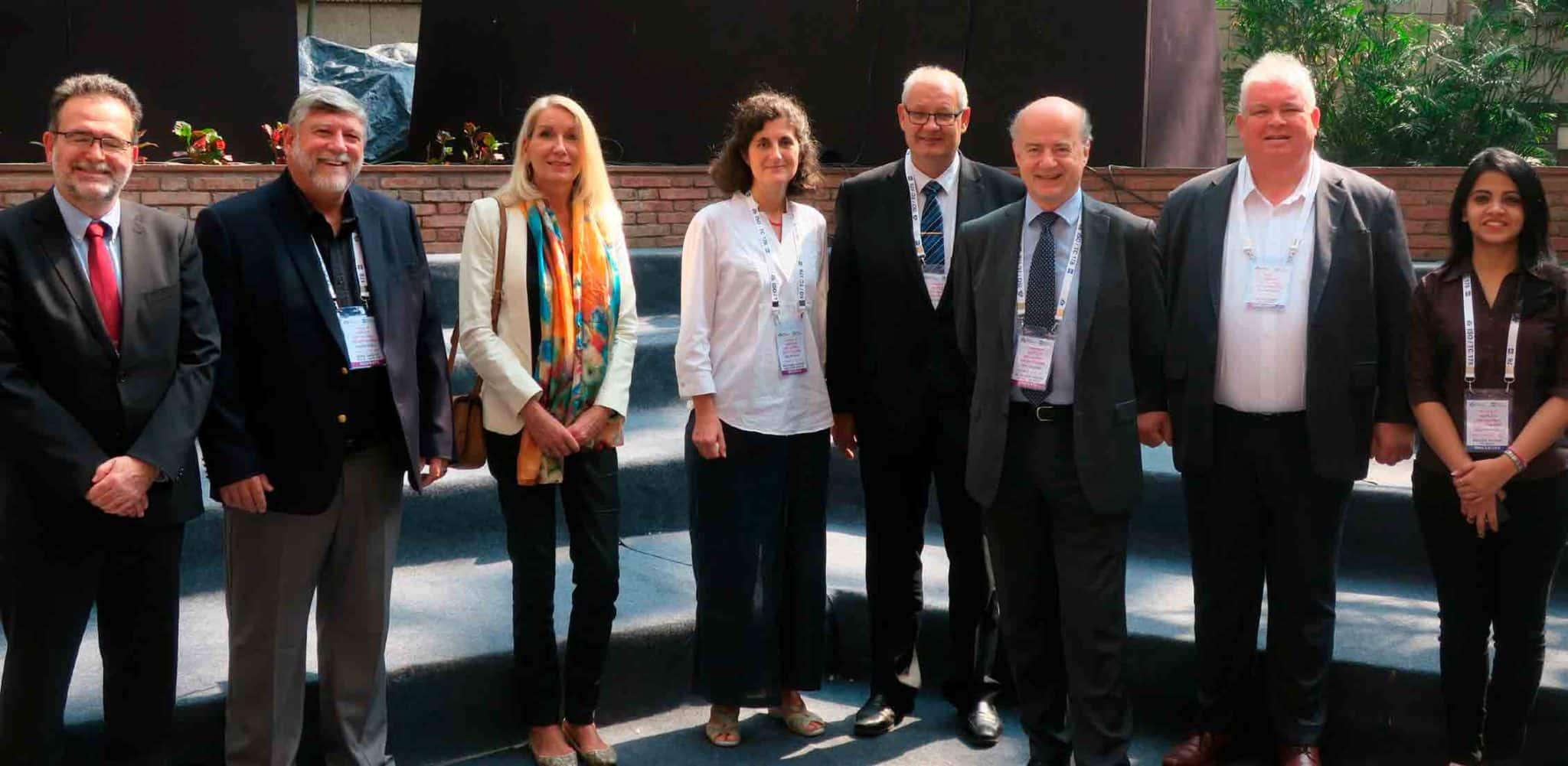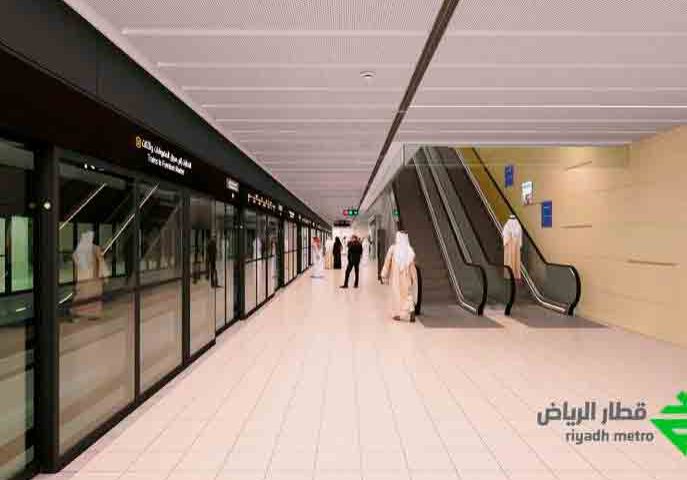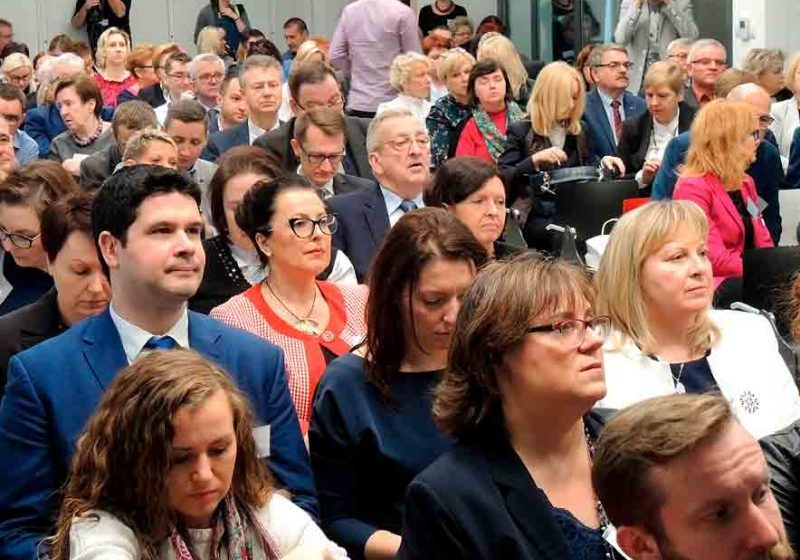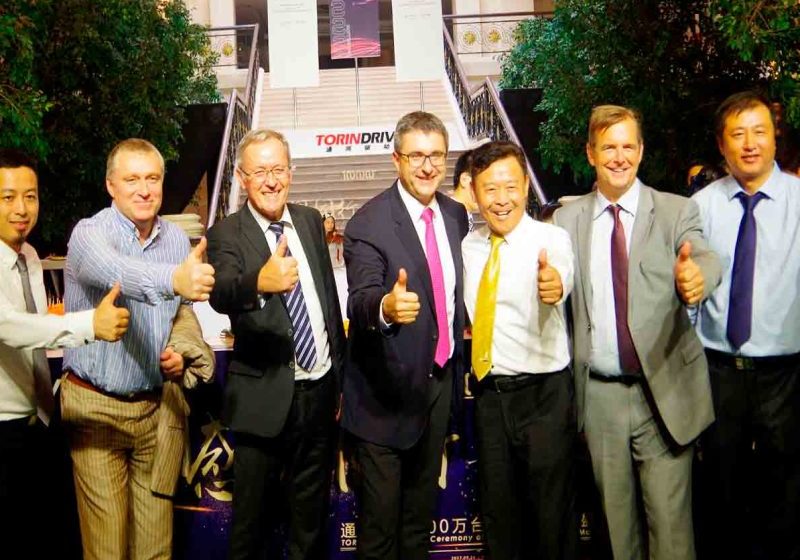ISO/TC 178 Plenary Meeting in New Delhi
Feb 1, 2018

Productive meeting sets direction for future elevator standards.
First impressions of India from the perspective of visitors from abroad are, understandably, as varied as the country itself, which is one of the most diverse in the world. India’s diversity includes a wide range of topographical features, from the majestic Himalayas in the north to the great valleys of the Indus, Ganges and Brahmaputra. The climate varies greatly from region to region, as well as seasonally.
Delhi and New Delhi mirror a microcosm of the incredible variety of cultures, languages, ethnic groups, philosophies, beliefs and lifestyles of India. The streets of the Indian capital teem with endless traffic. Cars, buses, tuk-tuks, motorcycles, motorscooters, bicycles, cows and pedestrians fill all available street space amidst a continuous din of automobile horns.
Classical architecture varies from ancient structures, inherently concomitant with such spiritual practices as Hinduism, Buddhism, Islamism and Christianity, to magnificent secular structures. Each architectural style adds to the richness of the cultural heritage of this diverse subcontinent.
India has experienced enormous economic development in recent times, and a well-educated middle class has emerged. India’s contribution to high technology is highly significant on a worldwide scale and a strong driver of overall development. Many new high-rise commercial and residential buildings have appeared in recent years, and the consequent demand for elevators has followed. The current annual market exceeds 60,000 units and is expected to increase at about 8% per year. Based on this background of economic development and positive outlook for the elevator industry, it is fitting that New Delhi was selected to host the International Organization for Standardization Technical Committee (ISO/TC) 178 Plenary Meeting on October 9-13, 2017.
WG Meetings
The following meetings preceded the actual Plenary Committee meeting: ISO/ TC 178 Working Group (WG) 4 Safety Requirements and Risk Assessment, convened by David McColl (Canada); WG 5 Escalator Safety Requirements, convened by Edip Kaci (Germany); and WG 6 Evacuation and Lift Dimensions, convened by Ari Ketonen (Finland). The main purpose of these meetings was to continue the work assigned to the WGs, prepare updates on the status of the work and develop positions for presentation to the Plenary Committee.
Plenary Meeting
The plenary meeting was opened by Christian De Mas Latrie, chair of ISO/TC 178. De Mas Latrie invited C.B. Singh, director general of the Bureau of Indian Standards (BIS), to address the delegates.
Singh welcomed all delegates to New Delhi. He mentioned that it was an honor and a pleasure for BIS to host the 28th plenary meeting of ISO/TC 178. He acknowledged that many of the delegates had traveled long distances to attend, and that this was much appreciated. He emphasized the importance of standards in India and the world at large, and acknowledged the role of ISO in the development process.
Singh elaborated on the history of BIS. It was formed at the time of India’s independence in 1947, the same year ISO was chartered. Since then, ISO, BIS and India have come a long way. He mentioned that BIS has the secretariat for two ISO TCs and the convenership for 16 WGs.
Singh surmised that it was impossible to imagine modern-day cities without elevators. The safety of elevators and escalators is key to the continued development of cities. Unprecedented growth of cities is inevitable in the next 20-30 years as economic development accelerates. Codes and standards are paramount in ensuring safety as more elevators and escalators are deployed. BIS looks forward to continuing to work closely with ISO in the interests of safety.
Suhas Bagde, chair, Indian Mirror Committee (ETD 25), also welcomed the delegates. He indicated that India was a large market for elevators and would become one of the largest markets as more cities in the sky are built. He mentioned that ETD 25 was focused on the development of standards for the design, specification, fire-safety operation and maintenance of elevators. The Indian Standards (IS) are mandatory in India, and every elevator is intended to be inspected to ensure uniform passenger safety.
Bagde stated that ETD 25 and BIS, in general, are in favor of the adoption of ISO standards so as to have one set of standards worldwide. To this end, ISO 8100-1/2 would be adopted as soon as available.
Rajeev Sharma, head, BIS Electrotechnical Department, acknowledged the efforts of Eva Contival (ISO/TC 178 secretary), De Mas Latrie, Singh and Bagde. He also proposed a vote of thanks for Meghna Mudgal, member secretary, Indian Mirror Committee, for her role in organizing the meeting. He indicated that Indian volunteers participated in ISO/TC 178 WG 4, 5 and 6 meetings, as well as the plenary meeting. The commitment of BIS and the Indian elevator industry as a whole to ISO is very strong.
De Mas Latrie thanked Singh, Bagde and Sharma for their kind words and contributions to and support of ISO. He
also thanked them for hosting the meeting and acknowledged Mudgal’s efforts in organizing the meetings. He mentioned that the first plenary meeting took place in Paris in 1979. He welcomed all attendees and mentioned that this was the first time ISO/TC 178 was meeting in India. He extended a special welcome to first-time attendees. He indicated that locations of meetings had been broadening over the last few years, with meetings in South Africa, Australia and now India. He expressed a need for future meetings to be held in South America and more countries in Africa. De Mas Latrie advised the committee of regrets received. Contival conducted the roll call: there were 46 attendees from 16 countries, as well as the Pacific Asia Lift and Escalator Association.
De Mas Latrie expressed deep regret on behalf of the committee on the passing of Philippe Casteleyn, the erstwhile convener of WG 11. A minute of silence was observed in honor of Casteleyn.
De Mas Latrie then presented a summary of ISO/TC 178 membership, marketing and key information. There are 53 member countries, of which 26 are “p” (voting) members. Luxembourg is the latest edition to the “o” (nonvoting) membership list. The largest proportion of new-equipment installations is in the Asia-Pacific area. The worldwide installed base of elevator equipment exceeds 15 million units. The value of the world market for new equipment and service exceeds US$69 billion per annum.
Contival reported on behalf of the ISO TC 178 secretariat on the work progress of TC 178, liaisons to various external committees and status of the systematic review of standards for 2017. She gave an update on the status of the 17 documents in the preliminary, proposal, committee, enquiry, approval and publication stages of the standards development process. Contival reported that there are currently 11 liaisons with various European Committee for Standardization (CEN)/ European Committee for Electrotechnical Standardization/ISO/International Electrotechnical Commission (IEC) committees. She further reported that there are four standards under TC 178 out for systematic review. All these are envisaged to be renewed without technical revision. The ISO/TC 178 Strategic Business Plan was reviewed for currency and approved by the committee.
De Mas Latrie introduced Anna Caterina Rossi, ISO Technical Program manager, and welcomed her to the meeting. Rossi gave a comprehensive presentation on several important issues relating to standards development under ISO. She elaborated on the role of project management and how it could help expedite the standards development process. This includes a structured process for initiating and implementing a standards development project.
The process includes a discussion between the proposer and the committee secretariat to establish the best development route for the project. The secretariat would perform a risk assessment to identify potential problems in advance. Rossi also advised that the approval criterion for a New Work Item had been increased to two-thirds (rather than a simple majority) of the p-members voting positively. She mentioned that every TC is required to have a strategic business plan that needs to be reviewed and updated at each plenary meeting.
Rossi also provided other updates intended to streamline and clarify the standards development process. She explained the process for the creation, approval and utilization of ISO graphical symbols. The intention is to ensure uniformity of symbols for all ISO standards. Finally, Rossi summarized the salient features of the Vienna Agreement, which, when invoked, is intended to ensure equivalence between European and international standards. There are several aspects to the agreement, the applicability of which is dependent on the circumstances. Rossi’s presentation was very informative and well received by the committee.
Reports From WGs
The conveners of all WGs provided reports on the activities within their groups and the status of the projects with which they were engaged. The reports were informative and gave the committee a comprehensive understanding of the issues being embraced by the WGs. In general, the projects are proceeding to schedule and in line with the resolutions approved at preceding plenary committee meetings. Action plans have been developed in areas where difficulties that could affect the outcome or schedule are being experienced. The WGs requested support for several initiatives that resulted in various resolutions.
Resolutions
The ISO/TC 178 Plenary Meeting was very productive, and the active participation of the delegates resulted in the approval of 20 resolutions. Some of the more significant resolutions are described below.
Guide Rails
The current guide-rail standard, ISO 8100-33 (ISO 7465), is being revised to clarify some items and correct some inaccuracies. A resolution was approved to prepare a new revision of the standard with the aim of addressing material properties once the ongoing revision is completed. A call for additional experts will be launched to ensure that the necessary expertise is available.
Risk Assessment
A resolution was approved for WG 4 to review and determine if ISO 14798 Risk Assessment and Reduction Methodology needs revision upon reviewing the following:
- Ensure the methodology represents the “state of the art” in risk assessment and reduction.
- In cooperation with (and with expertise from) WG 8, develop methodology in ISO 14798 that addresses the mitigation of risks pertaining to the application of Programmable Electronic System in Safety Related Applications and safety integrity level-rated design.
- Develop guidance to assist the users of ISO 14798 in applying the methodology effectively. The guidance should include relevant examples to assist the user.
Performance-Based Standards
A resolution was approved to revise ISO/TS 8100–22/23 (ISO/TS 22559-3/4) Standards for Global Conformity Assessment Bodies to ensure they are consistent with ISO/IEC 17065, which represents the state of the art in certification and conformity assessment. These standards are necessary to ensure uniform utilization of performance–based standards on a worldwide basis.
Elevator Controls
A resolution was approved to revise ISO 8100-7 (ISO 4190-5) Lift (Elevator) Controls and extend its scope to ensure compatibility with EN 81-70. The standard includes provisions for controls required to comply with mandatory requirements in various countries.
Earthquake Requirements
A resolution to launch a call for experts for the revision of ISO TR 25741 Comparison of Earthquake Requirements to ensure adequate expertise for the revision of this Technical Report was approved. This is particularly important in view of the proliferation of high-rise buildings around the world.
Electromagnetic Compatibility
A resolution was approved to request WG 8 to revise “ISO 8102-2 (ISO 22200): Electrical Requirements for Lifts, Escalators and Moving Walks — Part 2: Electromagnetic Compatibility With Regard to Immunity” to ensure it is consistent with the state of the art in electromagnetic immunity.
Energy Consumption
The measurement of energy consumption is of increasing importance worldwide. A resolution was approved requesting that a Preliminary New Work Item be opened to revise ISO 25745-2 to include installations that contain express zones.
Conveners
Resolutions were approved to reappoint McColl, Kaci, Ketonen and Vincent Robibero as conveners of WG 4, 5, 6 and 8, respectively, for a further tenure of three years. The committee acknowledged the continued commitment and dedication of these leaders.
Thanks to the Chairman
Based on ISO policy, there is a term limit on the tenure of the chair of all TCs. The term limit for De Mas Latrie has been reached. A resolution was approved stating:
“The delegates and members of ISO/TC 178 would like to express their gratitude to the departing chairman, Christian de Mas Latrie, for the excellent accomplishments, as well for the successful leadership of ISO/TC 178 for the preceding 10 years.”
Future Meetings
A resolution was approved to gratefully accept the proposal from DIN (German institute for standardization) to host ISO/ TC 178 and its WGs for its plenary meeting in 2019 in Frankfurt, Germany. The WG and plenary meetings will take place during the first week of April 2019, with the latter starting on April 4, 2019.
ISO/TC 178 also acknowledged proposals to host future plenary meetings from Malaysia and China in October 2020. The proposals will be assessed and decided by the chairman of ISO/TC 178, considering overall TC objectives. The Standards Administration of China and Department of Standards Malaysia were requested to submit finalized proposals for hosting the 2019 WG and plenary meetings not later than the end of December 2017.
Further Announcements and Remarks
McColl announced that Takeshi Miyata of the Japan Elevator Association was retiring at the end of 2017. Miyata is the spokesman for the Japanese Delegation to ISO/TC 178. He has been active in WG 4 since 2007. He has also led the Japanese Study Group on the Task Force on Convergence. Miyata was instrumental in the creation of Japanese Industrial Standards ( JIS) for elevator safety. These standards are aligned, to a large extent, with ISO/DIS 8100-1/2. Moreover, Miyata led the development of the table in ISO/DTS 8100-3 that identifies JIS requirements to be used in lieu of ISO/DIS 8100-3 clauses. Miyata will be greatly missed by WG 4. Ketonen added a tribute to Miyata and thanked him for his contribution to the work of WG 6. He wished Miyata the best for his retirement. Miyata thanked McColl and Ketonen for their kind words and indicated that it had been a rewarding experience to work with the members of the WGs and TC.
On behalf of the secretariat to ISO/TC 178, Contival paid tribute to the leadership of De Mas Latrie. Contival described De Mas Latrie as a true professional with a multicultural outlook. Under his guidance, ISO/TC 178 had reached out to diverse parts of the world. Plenary meetings were held for the first time in Russia, Africa, Australia and, now, in India. Much progress had been made in the creation of international standards with a strong direction set for the future.
De Mas Latrie thanked Contival for her kind words and dedicated service over the years. He reflected on his tenure as chair of ISO/TC 178, during which he had met many experts, some of whom have retired, and some of whom have left this world. He felt privileged to have discovered other ways of life and other ways of thinking. Interacting with representatives of diverse cultures reinforced his basic trust in and respect for others.
De Mas Latrie expressed pride in the accomplishments of ISO/TC 178 but with humility. He said that credit was due to the secretary, the conveners, the WG experts and all the volunteers who contributed to the end results. He reminded attendees that the Worldwide Prescriptive Standard project had been launched by the previous chair, Philippe Lamalle, and was nearing completion as ISO 8100-1/2 and ISO/TS 8100-3.
De Mas Latrie thanked Singh, Bagde, Sharma and the BIS for hosting the meetings, and Mudgal for her efficient organization. De Mas Latrie commended the committee on the diligence of its members and on the progress that had been made. He thanked the conveners and WG members for their hard work and commitment, as well as the delegates and guests for their participation. De Mas Latrie also thanked the resolution drafting committee (your author, Guillaume Bonatre and Contival) and Rossi for her insights and guidance.
Recommendation for Appointment of the Next Chair
Contival explained that the Association Française de Normalisation (AFNOR), which is the secretariat for ISO/TC 178, has the responsibility for recommending a suitable candidate for chair of TC 178 to ISO senior management.
After much consideration, AFNOR has selected Dr. Gero Gschwendtner as the candidate for chair. Dr. Gschwendtner has more than 20 years of experience in the elevator industry, including many years in codes and standards. He is an active member of ISO/TC 178 WG 4, 5 and 6 and a member of the Austrian Standards Committee ON AG 017. He is convener of CEN/TC 10 WG 2, which is responsible for the development of the EN 115 series of standards for the safety of escalators and moving walks. He is also an active member of CEN/TC 10, including TC 10 WG1.
Gschwendtner is very articulate and has excellent technical and leadership qualities. The announcement was well received by the attendees, who congratulated him.
De Mas Latrie reminded attendees that the Worldwide Prescriptive Standard project had been launched by the previous chair, Philippe Lamalle, and was nearing completion as ISO 8100- 1/2 and ISO/TS 8100-3.
Concluding Thoughts
Overall, the 28th ISO/TC 178 Plenary Meeting was very productive and successful. Much work remains to be completed. The organization of the meeting and attention to detail constituted affirmation of the capability and professionalism of the BIS team.
As the meeting ended and the sun set over New Delhi, your author reflected on a quotation by Mahatma Gandhi: “In a gentle way, you can shake the world.” Indeed, the visible progress in the development of new buildings, shopping malls, metro systems, roads and other infrastructure gives life to Gandhi’s expression. India is certainly emerging as a vibrant economic power, and its imprint on the world will be increasingly evident with the passage of time, albeit in a gentle manner.
Get more of Elevator World. Sign up for our free e-newsletter.









